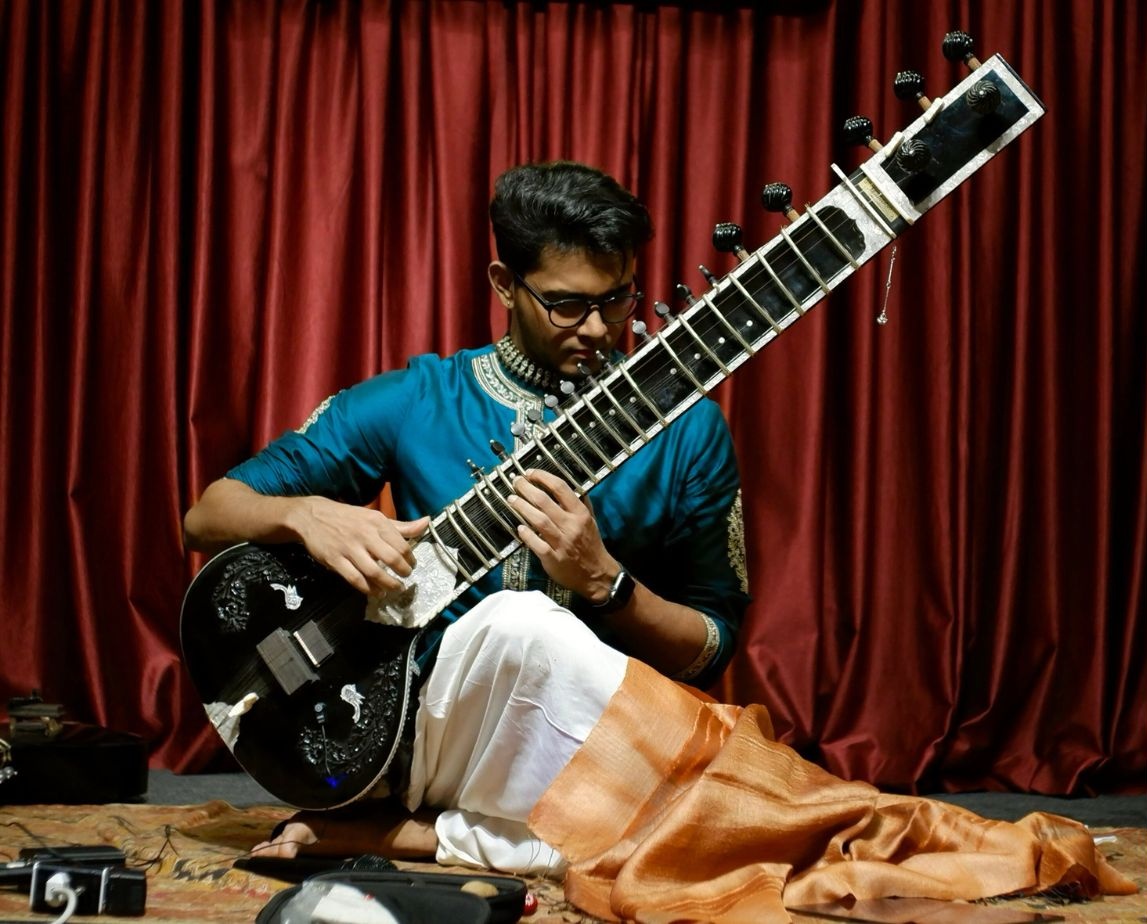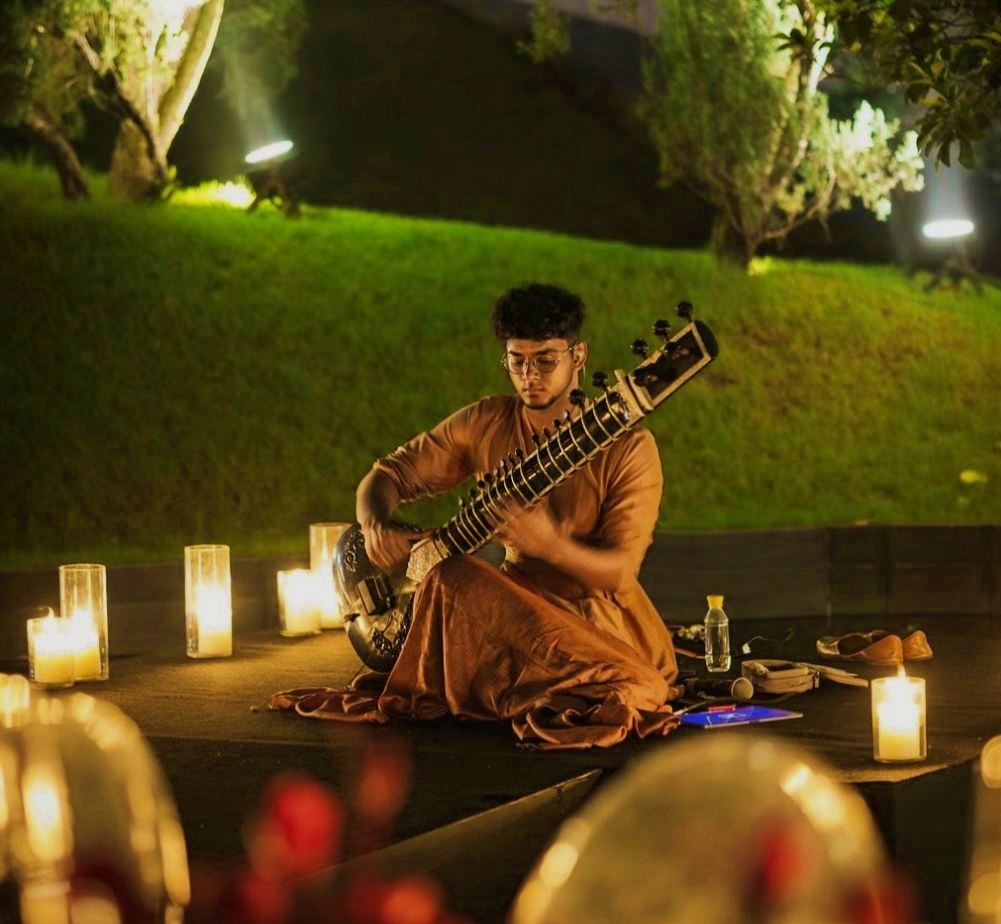On most days, he juggles pixels. On some nights, he conjures ragas. In a world increasingly tuned to instant gratification, Swayam Siddha Priyadarshi is doing something delightfully countercultural: performing Indian classical music on a 12-city tour while holding down a full-time day job. As he tunes his sitar under stage lights or sketches wireframes at his global tech firm’s Hyderabad office, he seems to belong to both the old world and the new.
“This tour,” he says, with the earnestness of someone still surprised by his own momentum, “is about translating into live what I’ve been giving digitally.”
He started out, like many of his generation, on Instagram. A Covid-era acapella experiment evolved into a steady stream of reels: snippets of his sitar playing, sometimes interwoven with familiar hooks, sometimes bare and traditional. Slowly, the views came. The comments. The followers. A community. Now, the road.
Of Hashtags And Harmonies
When he walks on stage, the audience doesn’t always match the cliché. “You’d think it would be mostly older folks,” he says, “but it’s 25 to 35-year-olds, mostly. Millennials and Gen Z.” These are the same people who double-tap his videos on their phones. The same people who (after the show) come up to him, eyes bright, and say: I want to learn the sitar. That’s the moment, he says, when all the balance sheets of content, clicks, and practice hours suddenly make sense.
A Raga And A Hard Place
He didn’t begin with the sitar. Or with the idea of performance. As a child in Bhubaneswar, music came via his mother’s song mp3 folders and a pair of wired earphones. A rendition of a tarana. A sitar track. Some songs, just stay, he says. At 12, he asked to learn music. Keyboard lessons came first, then a short-lived attempt at the santoor, and finally, at 15, the sitar. Teachers were few and far between. His mother (now learning Hindustani vocals herself) found him one.
Later, as an NID student in Ahmedabad, he found his guru online: Shri Ram Prapanna Bhattacharya, an exponent of the Etawah gharana. “That changed everything,” he says. When Covid hit, they continued their lessons virtually. The distance made no difference. The lineage was now his.

The young sitarist has been training under his guru Shri Ram Prapanna Bhattacharya, an exponent of the Etawah gharana (ETV Bharat)
Design Thinking, Raga Thinking
“In the beginning,” he reflects, “you look at the sitar as an object. Over time, it becomes a language. You zoom out and start thinking in music.” It helps that his day job is in product design. His understanding of audience behaviour and aesthetics infuses even his most traditional pieces. The music remains authentic, he insists. But the experience around it (the lighting, the framing, the mood) can and should evolve.

The artiste believes he is the young branch of a very old tree (Indian classical music) (ETV Bharat)
“You give people a hook, a way in. Maybe start with a familiar tune, then pull them into the classical. Or shape a bandish into a more melodic arc.” It’s not dilution, he clarifies, it’s design.
Of Gharanas and Gym Routines
He trains five times a week: Strength training, high-protein meals, a minimum of eight hours of sleep. That’s how you stay sharp for a sitar tour when you’re also in back-to-back Zoom meetings. He laughs: “Between shows, I try to stay offline. Just me-time. Not scrolling.”
As for musical discipline, his guru is paramount. “Shri Bhattacharya ji breaks things down methodically. He’s a master of technique.” When asked if he feels responsible for upholding gharana traditions, he gives an elegant shrug: “I’m a young branch of a very old tree. Innovation is inevitable, even in tradition.” Even the sitar has evolved. “The older sitars didn’t have the kind of sustain we have today. That changes how you play.”
Technology and tradition, he suggests, aren’t opposing forces. They’re twin threads.
Sitar In A Global Soundscape
Where does the sitar belong today? Anywhere emotion is needed, he says. In jazz, rock, semi-classical and fusion. It isn’t genre-bound anymore. Like the voice, the sitar can carry sorrow or joy or longing across cultures.

Swayam at an open air live performance (ETV Bharat)
He composes, but not ragas in the conventional sense. “There are already so many beautiful ragas. I make compositions: songs that might stay with people, even if they don’t know what taal or raga is being used.” His influences come from a wide palette. Vidushi Veena Sahasrabuddhe, Ustad Vilayat Khan, AR Rahman, Anoushka Shankar. Even pop, global beats, and electronic textures. If there is a mission, it is onboarding. To take people who’ve never heard a bandish and show them a doorway. Maybe a light-filled one. Maybe with a catchy prelude. But a doorway nonetheless.
At the end of the show, when someone tells him they want to pick up the sitar, he tells them this: “Don’t fall in love with the idea of being a sitarist. Fall in love with the music itself.”
Catch the rest of Swayam’s shows in Ahmedabad (Footlight Studio on August 3), Mumbai, Vizag, Hyderabad (The Moonshine Project on August 10), Goa, Kolkata, Udaipur (Radhe Krishna Niwas Homestay on August 22) and Delhi (The Piano Man Jazz Club on August 24). Check out his social media page for venues and dates.
(This interview is part of our column HYDERABAD ROCKS that documents the movers and shakers in the city’s music scene.)
Read more:
- Interview | The Revisit Project Rediscovers The Golden Age Of Hindi Film Music, One Sax Solo At A Time
- Interview | Padma Shri Geeta Chandran Is Building A New Classical Dance Gurukul, Inclusive, Rigorous, And Rooted In Modern India
- Tupac To Sidhu Moosewala, Hologram Concerts Are Where Popular Past Stars Are Born Again
- Meet Nushver, The Metal Band From Mumbai Turning Mortality Into Melody






